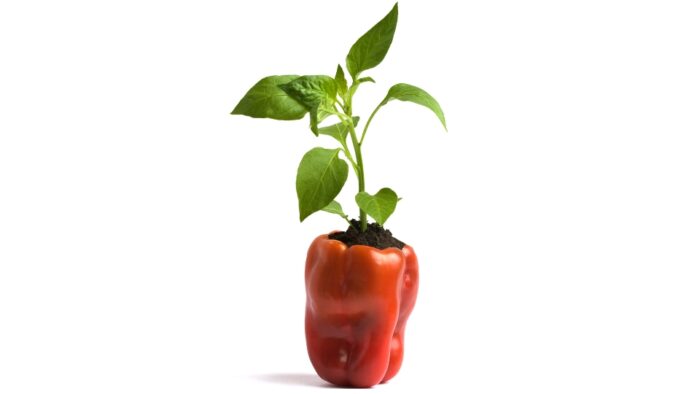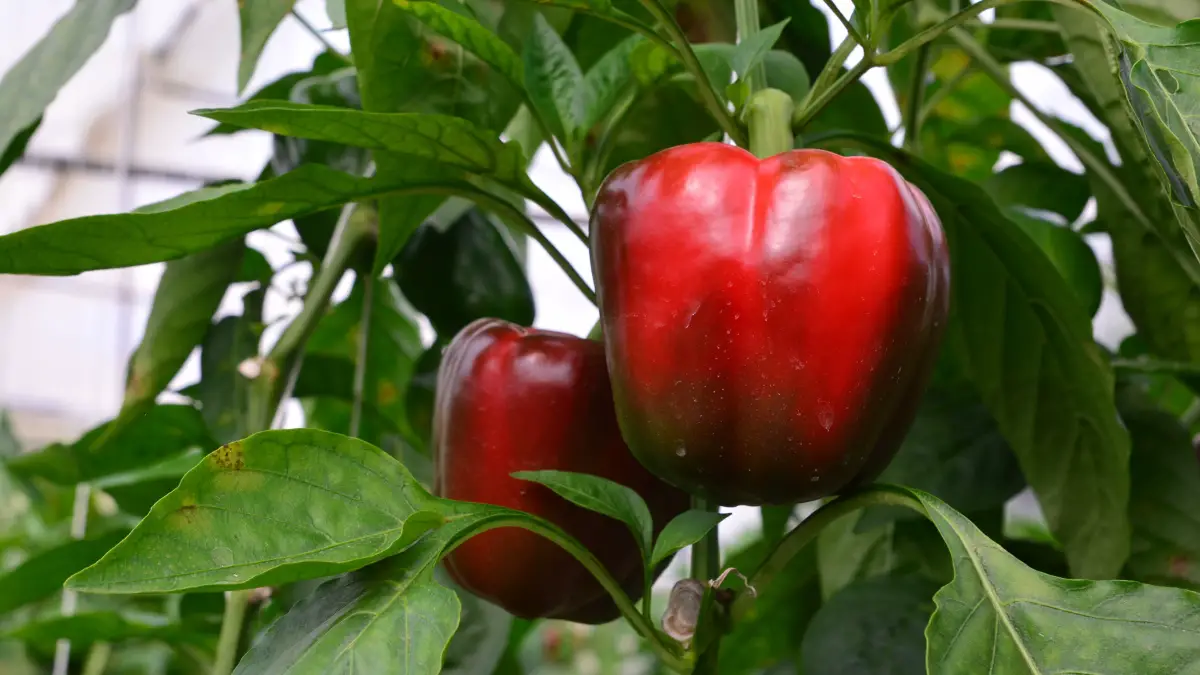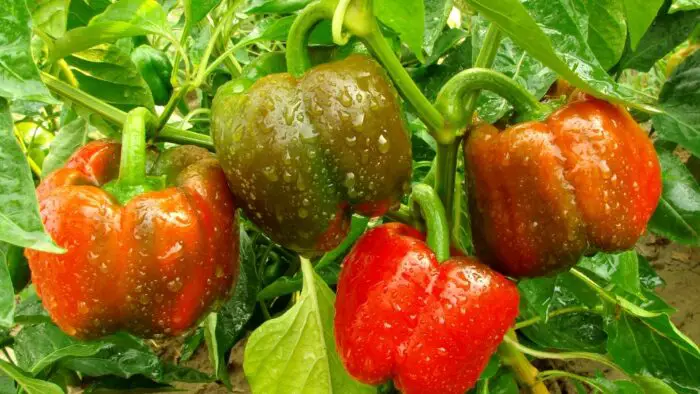Last Updated on March 13, 2023 by Griselda M.
Most gardeners would like to know how many red peppers can one plant produce. This is because gardeners are curious to know if their plants have been producing the right quantity of peppers.
Bell peppers are a renowned vegetable that many people enjoy with almost any meal. The greatest thing about them is the ability to grow them right in your home, whether you have a garden or containers.
There are many things that a gardener needs to take into account and practice to get the best out of their bell pepper plant. This article will help you understand how to get the best yield from your bell pepper plant and more.
Facts About Bell Pepper Plants
- Bell peppers are available in many different varieties
- They grow on bushes that are short and stubby
- Bell pepper bushes have stems that are woody but green, and their leaves tend to be bright and muted green colors.
- The bell pepper plant produces beautiful flowers in either white or purple colors that are bell-shaped. The flowers are about an inch in size and brighten the overall look of the plant.
- Bell peppers come in a variety of colors –red, green, yellow, purple, orange, and brown.
- After 3 to six weeks of flowering, these plants bear fruit quite fast.
- Bell pepper plant grows up to about 3 and a half feet tall.
- It is an annual plant in areas with a temperate climate, growing only for one season.
- Bell pepper is thought to have come from South America or Central America.

So, How Many Bell Peppers Per Plant?
On average, bell pepper plants will yield 5 to 10 peppers during the growing season. This is a good harvest but it totally depends on the variety of the plant. The care you give your pepper plants, the weather conditions they’re afforded, and the type of bell pepper you’re growing will have a direct effect on the number of peppers you get.
There are certain things you can do to increase the yield that your plant brings forth. These steps will apply wherever you choose to grow your peppers, whether in containers or your garden. To maximize your harvest and have a bumper crop for this renowned vegetable, read on.
How to Get The Most Bell Peppers Per Plant
- Provide sufficient sunlight. The very minimum you need to give your bell pepper plant is at least 6 hours of sunlight each day. Make sure this includes full sun exposure and not partial.
- Well-drained soils. You will need to make sure your bell pepper gets good soil. It has to be fertile, well-draining soil. Do not let the water stand in the bed or pot, as the plant will begin to rot.
Compressed Organic Potting-Soil for Garden & Plants
- Use a deep pot. When planting your bell pepper plant in a pot, be sure it’s deep enough, at least 10 inches, to allow the roots to dig deep into the soil so the plant can thrive.
- Warm climate. Bell peppers thrive in warm areas. If the climate is too cold, it will hinder the plant from producing a good yield. This is because the pepper plant is trying to conserve its energy for survival. Additionally, too-hot weather makes the flowers fall before they produce any fruit. The temperature should not go below 50 degrees F or above 90 degrees F.
- Provide the right nutrients. The bell pepper plant requires the right nutrients to bear many fruits. Too much Nitrogen makes the plant produce an increased amount of leaves while bearing fewer fruit. Your soil must be rich in potassium and phosphorous for exceptional growth. To get your soil to these levels of nutrients, add a teaspoon of fertilizer when planting and add another one when the plant begins to flower. This should encourage more yields.
- Water your plant properly. If your bell pepper lacks water, then it produces weak flowers, and the likelihood of them surviving is relatively low. They might not all die off, but the fruit they produce is usually not high quality, and at times, the plant might not produce any peppers at all. Water your plants at least one inch every week to keep them healthy and strong.
- Do not leave your plants unattended. For gardeners growing their bell pepper in the ground, it is advisable to pull out the weeds that are surrounding the plant. Weeds suck up nutrients that should be feeding the pepper plant.
Learn 3 Simple Ways Of How To Dry Peppers
How Many Bell Pepper Plants per Person
It is essential to know how many bell pepper plants per person, especially if you plan on preparing meals for your family. While some people may agree that two or three pepper plants are ideal for each person, others may not think so. The reason for this would depend on portion sizes per person and preference.
I mean, one may like a bigger helping of stuffed peppers, while others may consider it a snack. However, a word of advice is to always aim to plant twice that amount when sowing your seeds. Doing this would give you the advantage of transplanting the ones that grow quicker than others.
Tips to consider when growing peppers
- If you grow two to three plants for each person, you should yield between 5 and 18 pounds from every 10-foot row.
- If you are growing your peppers in rows, then spacing them about 38 to 36 inches apart will afford them ample room to grow.
- With the correct care and maintenance, you can look forward to harvesting your bell peppers twice every year. The best harvesting time is in the summer and fall months.
- To get abundant yields, it is also advisable to plant two pepper plants together as they become more productive in this instance. You can also opt to start them separately and then group them up when transplanting to pots.
How Many Pounds of Peppers per Plant
If you want to know how many pounds of peppers per plant, then the following information is for you. Firstly, you must know the right amount of plants to grow if you want a heavier yield. If you want to grow peppers to dry and freeze them so that you have enough available throughout the year, harvesting bigger yields would be beneficial.
If you are growing a large plant, you can expect at least 3 to 4 pounds of peppers through the growing season. Keep in mind that for the plant to produce more chilies, it is essential to continuously harvest mature peppers to make room for new growth. This gesture will allow the pepper plant to continue flowering, which will encourage new development.
Additionally, five medium bell peppers or three large ones equate to about a pound. You may also notice that large pepper fruit usually means a lesser yield, while smaller ones produce a larger amount per harvest.
Tips to enhance bell pepper yields
- It is best to start your peppers plants in an indoor environment.
- Light is an essential part of their growing period. If natural light is not possible, the use of grow lights is recommended for favorable results.
- Making use of soil that is rich in nutrients and well-draining is essential for growing bell peppers and other chili plants.
- If you are using a plant pot, ensure that it is large enough to accommodate your pepper plant. Keep in mind that potted plants need ample space to grow their best.
- Plant boosters are great for peppers. Using the correct fertilizer when growing bell peppers will afford you larger fruit.
- Plant pruning is good for encouraging more pepper growth.
- A warm environment and regular watering will also be beneficial in increasing your plant’s production capabilities.
How Long Do Pepper Plants Produce Fruit
How long do pepper plants produce fruit is a question in a lot of gardeners’ minds. A pepper plant can take up to three months to produce its first set of fruit. This is especially true if the plant was transplanted and grown. However, hot pepper plants, on the other hand, take about 21 weeks to produce a yield in this case.
To answer the question above, you may be glad to know that pepper plants will thrive and produce fruit for as long as they are growing. This means that unless these beneficial food plants are killed by neglect or the elements, or if you choose to remove them, they will continue to give you abundant harvests.
Also, keep in mind that production will depend on the variety of pepper plants you’re growing. While some varieties fruit quickly, others take a bit longer to produce.
Bell Pepper Plant Yield
Now that we know what to do to get many bell peppers per plant, we can do all the above and then sit back and enjoy a bumper harvest. However, it is not only about knowing how many bell peppers can one plant produce. Implementing the advice above is vital to get favorable results.
You can enjoy all those recipes you have always wanted to try with your bell peppers. Whether it’s stuffed, sautéed, or caramelized bell peppers, you can try new recipes and more.
FAQs
How many peppers does it take to grow a plant?
I am looking for the amount of peppers that I need to get a plant going. I currently have one seedling in a pot and I would like to move it into my garden. I know there are different types of peppers but I want to know how many peppers a plant will produce per year.
There are lots of factors that affect how many peppers you can expect to get from a pepper plant. The type of pepper, the size of the pepper, the climate where the pepper is grown, and how well you care for the plant. There is no simple formula that will give you an exact answer to this question, so it is best to look at different peppers and see what you think you will be able to get. The main thing to keep in mind when growing peppers is to make sure you give them enough water and nutrients.
How should you start planting a pepper plant?
The first step in growing your own pepper is to buy a seed. You can buy seeds online or find a local grower. Pepper seeds can be planted directly into your garden or in a pot. If you are planting the seeds directly into your garden, make sure to use a seed-starting mix. This will help to protect the seeds from insects and disease. If you are planting the seeds in a container, make sure to use a peat-based potting soil.
Caroline is a gardener who loves to get down to the nitty–gritty of gardening. She proudly proclaims herself as a ‘dirt worshipper‘ and can often be found deep in the garden, covered in soil and singing to her plants. As a self–proclaimed ‘plant whisperer‘, Caroline believes that plants need love and attention just like any other living thing, and she loves to give them both. When she‘s not tending to her garden, you can often find her researching the latest gardening trends, or teaching others how to make their gardens thrive



